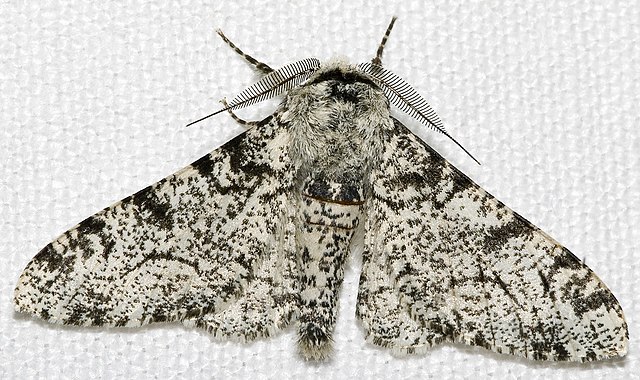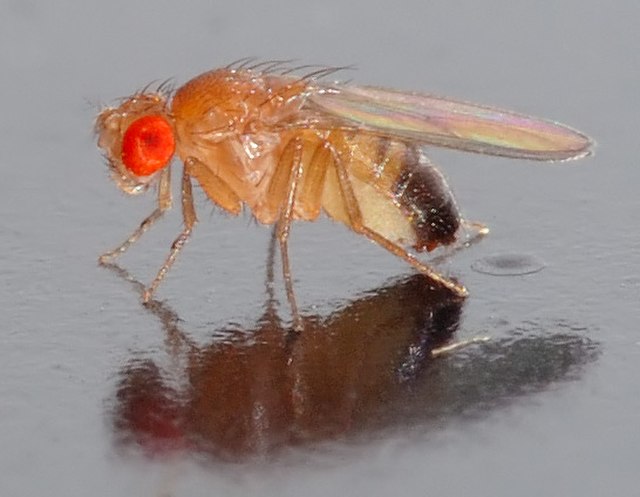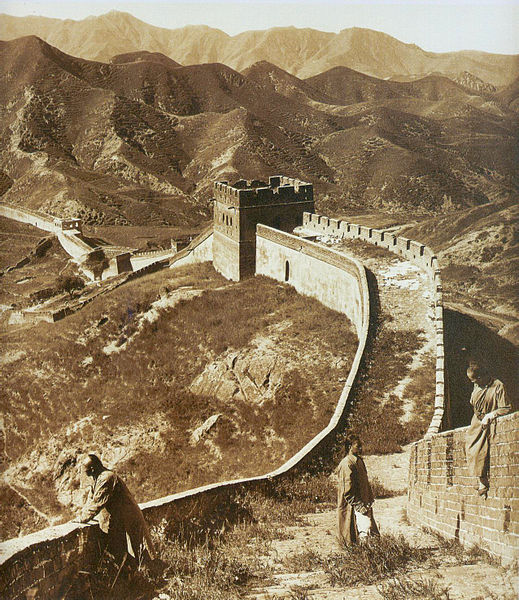In population genetics, directional selection is a type of natural selection in which one extreme phenotype is favored over both the other extreme and moderate phenotypes. This genetic selection causes the allele frequency to shift toward the chosen extreme over time as allele ratios change from generation to generation. The advantageous extreme allele will increase as a consequence of survival and reproduction differences among the different present phenotypes in the population. The allele fluctuations as a result of directional selection can be independent of the dominance of the allele, and in some cases if the allele is recessive, it can eventually become fixed in the population.
Peppered moth with dark phenotype that was positively selected for during the Industrial Revolution.
Population genetics is a subfield of genetics that deals with genetic differences within and among populations, and is a part of evolutionary biology. Studies in this branch of biology examine such phenomena as adaptation, speciation, and population structure.
The typical white-bodied form of the peppered moth
Industrial melanism: the black-bodied form of the peppered moth appeared in polluted areas.
Drosophila melanogaster
The Great Wall of China is an obstacle to gene flow of some terrestrial species.





